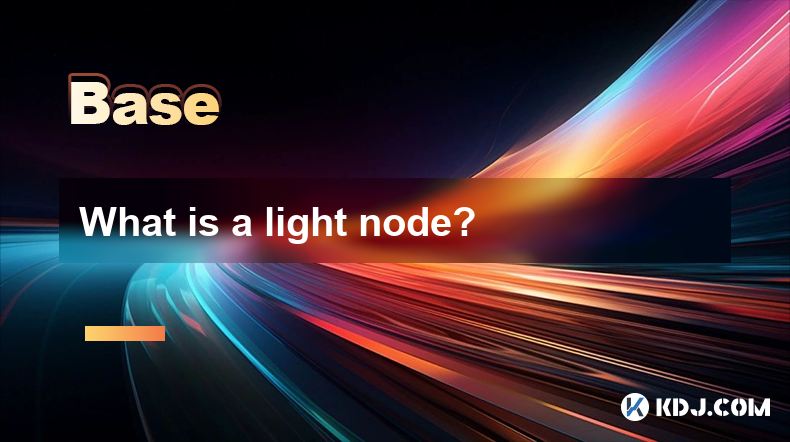-
 Bitcoin
Bitcoin $87,160.3686
2.59% -
 Ethereum
Ethereum $1,577.5291
-0.58% -
 Tether USDt
Tether USDt $1.0000
0.00% -
 XRP
XRP $2.0804
0.22% -
 BNB
BNB $596.3334
0.99% -
 Solana
Solana $136.5658
-0.15% -
 USDC
USDC $1.0000
0.00% -
 Dogecoin
Dogecoin $0.1584
1.77% -
 TRON
TRON $0.2458
-0.32% -
 Cardano
Cardano $0.6208
0.05% -
 Chainlink
Chainlink $13.1006
-1.96% -
 UNUS SED LEO
UNUS SED LEO $9.1412
-1.97% -
 Avalanche
Avalanche $19.9880
2.50% -
 Stellar
Stellar $0.2528
3.56% -
 Shiba Inu
Shiba Inu $0.0...01238
-0.19% -
 Toncoin
Toncoin $2.8930
-3.79% -
 Sui
Sui $2.2031
4.44% -
 Hedera
Hedera $0.1692
1.25% -
 Bitcoin Cash
Bitcoin Cash $343.2002
2.28% -
 Polkadot
Polkadot $3.8296
-1.99% -
 Hyperliquid
Hyperliquid $17.9378
1.39% -
 Litecoin
Litecoin $78.0777
0.75% -
 Dai
Dai $0.9999
0.00% -
 Bitget Token
Bitget Token $4.4322
0.90% -
 Ethena USDe
Ethena USDe $0.9993
0.00% -
 Pi
Pi $0.6347
-0.88% -
 Monero
Monero $214.7110
-0.08% -
 Uniswap
Uniswap $5.2643
-0.22% -
 Pepe
Pepe $0.0...07787
2.99% -
 Aptos
Aptos $4.9970
-0.84%
What is a light node?
Light nodes offer a lightweight blockchain experience, needing less storage and bandwidth than full nodes. They query full nodes for data, prioritizing speed but sacrificing some security and independence.
Mar 24, 2025 at 12:07 pm

Key Points:
- Light nodes offer a lightweight alternative to full nodes, significantly reducing storage and bandwidth requirements.
- They rely on full nodes for the complete blockchain data, querying them for specific information.
- Light nodes are ideal for users with limited resources or those prioritizing speed and efficiency.
- The security of light nodes depends on the integrity of the full nodes they connect to.
- Implementing a light node involves choosing a compatible client, syncing with the network, and interacting with the blockchain.
What is a Light Node?
A light node, also known as a simplified payment verification (SPV) node, is a client that connects to a blockchain network without downloading the entire blockchain. Unlike full nodes, which store a complete copy of the blockchain's transaction history, light nodes only download a small portion of the data, significantly reducing storage and bandwidth demands. This makes them accessible to users with limited resources or those prioritizing speed and efficiency. The trade-off is a slightly reduced level of security and independence compared to a full node.
How Does a Light Node Work?
Light nodes achieve their lightweight nature by relying on full nodes for the complete blockchain data. When a light node needs information, such as the balance of a specific address or the validity of a transaction, it queries a full node for that specific data. The full node then responds with the requested information, allowing the light node to operate without storing the entire blockchain. This process is efficient because it only downloads the necessary data, not the entire blockchain's history.
Advantages of Using a Light Node:
- Reduced Storage Requirements: Light nodes drastically reduce the amount of storage space needed, making them suitable for devices with limited storage capacity. This is a significant advantage compared to the massive storage requirements of a full node.
- Lower Bandwidth Consumption: Downloading only the necessary data significantly reduces bandwidth usage, leading to lower internet costs and faster synchronization. This is particularly beneficial for users with limited or metered internet connections.
- Faster Synchronization: Because they download less data, light nodes synchronize with the blockchain network much faster than full nodes. This allows for quicker access to blockchain data and faster transaction confirmations.
Disadvantages of Using a Light Node:
- Security Dependence: Light nodes rely on the honesty and integrity of the full nodes they connect to. If a malicious full node provides false information, the light node may be vulnerable to attacks or incorrect data. This contrasts with full nodes, which have independent verification.
- Limited Functionality: While capable of many tasks, light nodes may not be able to perform all the functions of a full node. Some advanced blockchain operations may require access to the complete blockchain data, which a light node lacks.
- Potential for Censorship: A malicious full node operator could selectively withhold information, potentially censoring certain transactions or data from the light node.
How to Implement a Light Node:
Implementing a light node typically involves these steps:
- Choose a Compatible Client: Select a cryptocurrency client that supports light node functionality. Many popular cryptocurrencies offer light clients specifically designed for this purpose.
- Download and Install: Download and install the chosen client on your device. The installation process will vary depending on the chosen client and operating system.
- Connect to the Network: Once installed, connect the client to the cryptocurrency network. This usually involves entering the network's peer addresses or allowing the client to automatically discover peers.
- Sync with the Network: The client will then begin synchronizing with the network, downloading the necessary headers and other minimal data required for operation. The synchronization time will be much faster than a full node.
- Interact with the Blockchain: Once synchronized, you can interact with the blockchain using the light client, such as checking balances, sending transactions, or viewing on-chain data.
Common Questions and Answers:
Q: Are light nodes as secure as full nodes?
A: No, light nodes are less secure than full nodes because they rely on the integrity of the full nodes they connect to. Full nodes independently verify transactions, while light nodes depend on others for this verification.
Q: What are the benefits of using a light node over a full node?
A: Light nodes require less storage space, bandwidth, and synchronization time. This makes them ideal for users with limited resources or those prioritizing speed and efficiency.
Q: Can I mine cryptocurrency with a light node?
A: Generally no. Mining typically requires a full node to participate in the consensus mechanism and validate transactions. Light nodes don't have the complete blockchain data necessary for this process.
Q: What happens if the full node I'm connected to is malicious?
A: A malicious full node could provide false information, leading to inaccurate data on your light node. This highlights the security trade-off inherent in using light nodes. Choosing reputable and widely used full nodes mitigates this risk.
Q: Are light nodes suitable for all cryptocurrencies?
A: No, not all cryptocurrencies support light clients. Check the specific cryptocurrency's documentation to determine if a light client is available.
Q: Can I run a light node on a low-powered device?
A: Yes, the reduced resource requirements of light nodes make them suitable for low-powered devices like smartphones or Raspberry Pis, where running a full node would be impractical.
Disclaimer:info@kdj.com
The information provided is not trading advice. kdj.com does not assume any responsibility for any investments made based on the information provided in this article. Cryptocurrencies are highly volatile and it is highly recommended that you invest with caution after thorough research!
If you believe that the content used on this website infringes your copyright, please contact us immediately (info@kdj.com) and we will delete it promptly.
- Lightchain AI: The Future of Cryptocurrency
- 2025-04-22 05:30:13
- Coinbase Expands XRP Futures Contracts Trading
- 2025-04-22 05:30:13
- Difficulty Spike and Hashrate Drop Lengthen Block Times
- 2025-04-22 05:25:13
- Despite the Harshest Profit Squeeze in Half a Decade, Bitcoin Mining on U.S. Soil is Consolidating and Gathering Momentum
- 2025-04-22 05:25:13
- Bitcoin (BTC) markets ticked higher
- 2025-04-22 05:20:13
- Shiba Inu (SHIB) and Lightchain AI (LCAI) Are Rapidly Gaining Ground, Positioning Themselves as Serious Competitors to Dogecoin.
- 2025-04-22 05:20:13
Related knowledge

What are the formal digital currency trading apps? What are the BTC exchange apps?
Apr 22,2025 at 03:28am
Regular BTC trading app 1. Binance Binance is a world-renowned digital currency trading platform, providing powerful APPs and excellent user experience. Its main features include: Rich trading pairs : Binance supports over 500 cryptocurrencies and thousands of trading pairs, and users can easily find the currency they want to trade. High security : Bina...

Recommended top ten spot digital virtual currency trading platforms in the world in 2025
Apr 21,2025 at 05:15pm
Recommended top ten spot digital virtual currency trading platforms in the world in 2025 1. Binance As the world's premier cryptocurrency trading platform, Binance is known for its extensive trading pairs and efficient trading services. Its features include: High Liquidity : Binance has huge trading volumes, ensuring users can trade at the best pric...

Ranking of top ten virtual currency trading apps in the currency circle (the latest authoritative list in 2025)
Apr 21,2025 at 10:28pm
The top ten virtual currency trading apps in the 2025 cryptocurrency circle are listed as follows: 1. Binance Binance is one of the world's leading cryptocurrency trading platforms, known for its efficient trading system and extensive currency support. Binance's user interface is designed with simplicity and is suitable for beginners and profess...

Introduction to the top ten digital currency trading app platforms in 2025
Apr 22,2025 at 03:49am
Introduction to the top ten digital currency trading app platforms in 2025 1. Binance Binance is one of the world's leading digital currency trading platforms, ranking first with its huge trading volume and extensive user base. Binance provides trading pairs of more than 500 cryptocurrencies, supporting a variety of trading methods such as spot trad...

The latest ranking of the top ten digital virtual currency trading platforms in 2025
Apr 22,2025 at 02:14am
The latest ranking of the top ten digital virtual currency trading platforms in 2025 1. Binance As the world's largest cryptocurrency trading platform, Binance has always maintained its leading position. The platform offers trading pairs in over 500 cryptocurrencies and supports multiple languages and payment methods. Its user-friendly interface i...

Which virtual currency app is better? Top ten cryptocurrency app trading platforms
Apr 22,2025 at 02:35am
Top 10 cryptocurrency trading application platforms recommended 1. Binance Binance is one of the world's leading cryptocurrency trading platforms, and is popular for its extensive currency support and efficient trading systems. Binance provides services including spot trading, futures trading, leveraged trading, etc., which meet the needs of differe...

What are the formal digital currency trading apps? What are the BTC exchange apps?
Apr 22,2025 at 03:28am
Regular BTC trading app 1. Binance Binance is a world-renowned digital currency trading platform, providing powerful APPs and excellent user experience. Its main features include: Rich trading pairs : Binance supports over 500 cryptocurrencies and thousands of trading pairs, and users can easily find the currency they want to trade. High security : Bina...

Recommended top ten spot digital virtual currency trading platforms in the world in 2025
Apr 21,2025 at 05:15pm
Recommended top ten spot digital virtual currency trading platforms in the world in 2025 1. Binance As the world's premier cryptocurrency trading platform, Binance is known for its extensive trading pairs and efficient trading services. Its features include: High Liquidity : Binance has huge trading volumes, ensuring users can trade at the best pric...

Ranking of top ten virtual currency trading apps in the currency circle (the latest authoritative list in 2025)
Apr 21,2025 at 10:28pm
The top ten virtual currency trading apps in the 2025 cryptocurrency circle are listed as follows: 1. Binance Binance is one of the world's leading cryptocurrency trading platforms, known for its efficient trading system and extensive currency support. Binance's user interface is designed with simplicity and is suitable for beginners and profess...

Introduction to the top ten digital currency trading app platforms in 2025
Apr 22,2025 at 03:49am
Introduction to the top ten digital currency trading app platforms in 2025 1. Binance Binance is one of the world's leading digital currency trading platforms, ranking first with its huge trading volume and extensive user base. Binance provides trading pairs of more than 500 cryptocurrencies, supporting a variety of trading methods such as spot trad...

The latest ranking of the top ten digital virtual currency trading platforms in 2025
Apr 22,2025 at 02:14am
The latest ranking of the top ten digital virtual currency trading platforms in 2025 1. Binance As the world's largest cryptocurrency trading platform, Binance has always maintained its leading position. The platform offers trading pairs in over 500 cryptocurrencies and supports multiple languages and payment methods. Its user-friendly interface i...

Which virtual currency app is better? Top ten cryptocurrency app trading platforms
Apr 22,2025 at 02:35am
Top 10 cryptocurrency trading application platforms recommended 1. Binance Binance is one of the world's leading cryptocurrency trading platforms, and is popular for its extensive currency support and efficient trading systems. Binance provides services including spot trading, futures trading, leveraged trading, etc., which meet the needs of differe...
See all articles






















































































